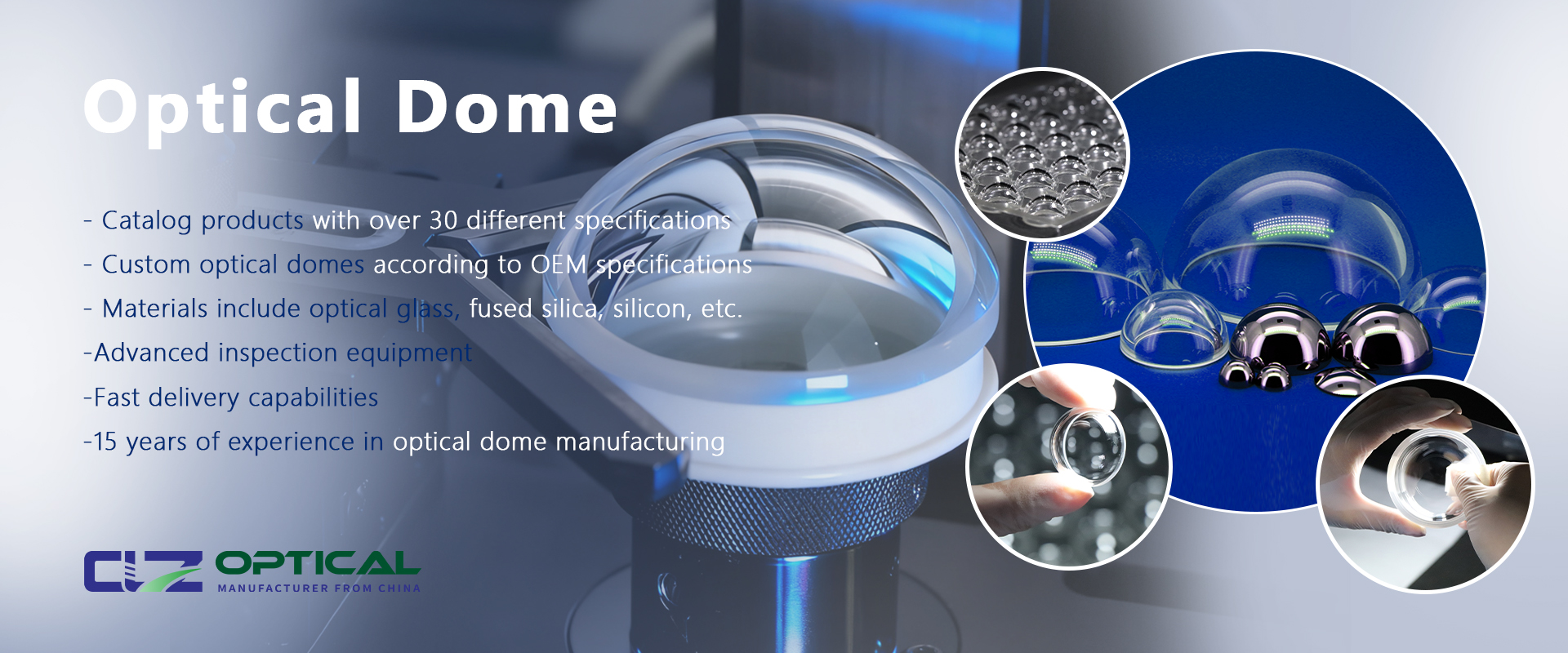The Difference Between a Single Lens and an Achromatic Lens
May. 27, 2025
Single lenses and achromatic lenses are two fundamental and critical components in optical systems. Their structural designs and functional characteristics determine their respective application scopes. A single lens is composed of a single optical element that controls light through the principle of refraction, whereas an achromatic lens corrects chromatic aberration by combining multiple materials to enhance image quality. This article will systematically analyze the differences between these two types from aspects such as optical performance, manufacturing processes, application scenarios, and technological trends.
1. Definition and Structural Composition
1.1 Single Lens
Composed of a single optical element, materials include optical glass, optical crystal, or plastic (PC, PMMA). The curved surface shapes include convex, concave, or a combination of flat and curved surfaces (such as plano-convex lenses, plano-concave lenses, biconvex lenses, and biconcave lenses). Focusing or diverging light through the refraction of a single lens on a curved surface is achieved. For a single lens made of optical glass or optical crystal, the manufacturing process involves cutting, grinding, and polishing a single component.
1.2 Achromatic Lens
Achromatic lenses are composed of two or more single lenses made from different optical materials (such as crown glass and flint glass). Crown glass has a low refractive index and low dispersion characteristics, while flint glass is characterized by high refractive index and high dispersion. The combination of these two materials achieves chromatic aberration correction through dispersion compensation. Typical structures include cemented (such as convex and concave lenses bonded together) or distinguished designs, which require precise control of the radius of curvature, thickness, and alignment accuracy of each lens. This design significantly improves image quality but also increases costs.
2. Optical Characteristics Comparison
2.1 Chromatic Aberration Performance
A single lens, due to the use of only one optical material, has a significant change in refractive index with wavelength, leading to the separation of focal points for different wavelengths of light (such as red and blue). For example, red light, with a lower refractive index, has a focal point farther from the lens than blue light, creating axial chromatic aberration and making it easy for color halos to appear at the edges of the image.
Achromatic lenses achieve color correction through a double cemented structure (such as crown glass and flint glass). The combination of these two can cancel out chromatic aberrations at specific wavelengths (such as F light 486.1nm and C light 656.3nm), reducing the chromatic focal shift to within 0.1% of the focal length, significantly reducing residual secondary spectrum. For more stringent spectral correction requirements, an apochromatic design is required, introducing a third lens (such as calcium fluoride) to extend the spectral range through three-wavelength chromatic aberration compensation.
2.2 Aberration Control
A single lens, in addition to chromatic aberration, also exhibits coma (comatic aberration) and other types of aberrations. Coma causes asymmetrical spot trailing, which is particularly noticeable when imaging off-axis or with large apertures. Due to the simple structure of a single element, it is difficult for a single lens to optimize multiple types of aberrations through its own design. It is typically suitable for systems where chromatic or other aberration requirements are not high.
Achromatic lenses can partially optimize aberrations through multiple lens combinations. For example, a double cemented structure can effectively suppress spherical aberration, but coma and distortion correction still rely on aspherical designs or additional lens elements. Moreover, precise control of lens curvature, thickness, and assembly accuracy can further reduce field curvature and astigmatism.
2.3 Spectral Adaptability
Single lenses are suitable for narrow spectral ranges, with their spectral adaptability limited by the material's transmission characteristics. They are typically optimized for specific bands (such as ultraviolet or infrared). For example, fused silica single lenses are suitable for the ultraviolet band (200-400 nm), while zinc selenide single lenses are specifically designed for the mid-infrared band (3–12 μm).
Achromatic lenses cover dual wavelengths or a broad spectral range. Their standard design spans the visible light spectrum (400-700 nm), achieving wide-spectrum chromatic correction through material combinations. For applications in the near-infrared band (700-2000 nm), low-dispersion materials must be used to correct specific wavelength chromatic aberrations through complementary dispersion characteristics.
3. Manufacturing Process and Cost Difference
3.1 Single Lens
The manufacturing process of single lenses is based on standardized procedures, including key steps such as material forming, curved surface grinding, and surface polishing. Due to the need for processing only one component, the technology is mature with a high yield rate, making it particularly suitable for large-scale production.
3.2 Achromatic Lens
The achromatic lens is composed of multiple single lenses. The basic processing technology of the cemented lens is similar to that of the single lens, but the cementing and centering technology is added. As the optimized form of the combination of single lenses, the production cost is usually 2-3 times that of a single lens.
4. Application Scenario Analysis
4.1 Industrial Manufacturing Sector
Single lenses are suitable for optical systems with low requirements for chromatic or aberrational errors. For example, in laser collimators, they serve as the primary beam shaping element; in production lines, they are used for optical projection or imaging in rough screening equipment for parts with low requirements for chromatic or aberrational errors.
Achromatic lenses are used in high-precision scenarios. For example, in machine vision systems, eliminating chromatic aberration enhances the clarity and resolution of multispectral images, enabling highly sensitive detection of defects such as micro-cracks on semiconductor wafers and scratches on metal components.
4.2 Medical and Life Sciences
Single lenses play an important role in basic medical equipment. For example, simple refraction instruments can realize refractive power detection through single lenses to meet the needs of basic vision screening.
Achromatic lenses are the core optical components of high-end medical equipment. In surgical microscopes, multiple lenses are combined to eliminate chromatic aberration; in fluorescence imaging instruments, the excitation and emission wavelengths are precisely distinguished; ophthalmic laser therapy devices use achromatic lenses to focus specific wavelength lasers, reducing the risk of thermal damage to surrounding healthy tissues.
4.3 Scientific Research and Professional Optics Field
Single lenses are often used in scientific research to build simple optical systems. For example, in spectrometers, through the cooperation of prisms or gratings and single lenses, single wavelength light can be roughly screened.
Achromatic lenses support the performance of high-precision scientific instruments. The objective lens of an astronomical telescope eliminates chromatic aberration through precise lens combinations; the objective lens of a high-resolution microscope utilizes achromatic design to achieve distortion-free imaging; spectral analyzers use achromatic lens systems to transmit and split light signals across the entire spectrum without distortion.
5. Summary
Single lenses and achromatic lenses differ significantly in structural design, chromatic aberration correction capability, manufacturing cost, and application scenarios. Single lenses are suitable for basic optical needs; achromatic lenses can achieve high-precision imaging, meeting the stringent requirements of professional fields for chromatic and aberration correction. The two complement each other within the optical technology system. When selecting, it is essential to consider imaging accuracy, spectral range, and cost constraints comprehensively to balance performance with economic benefits.
Previous: None





















